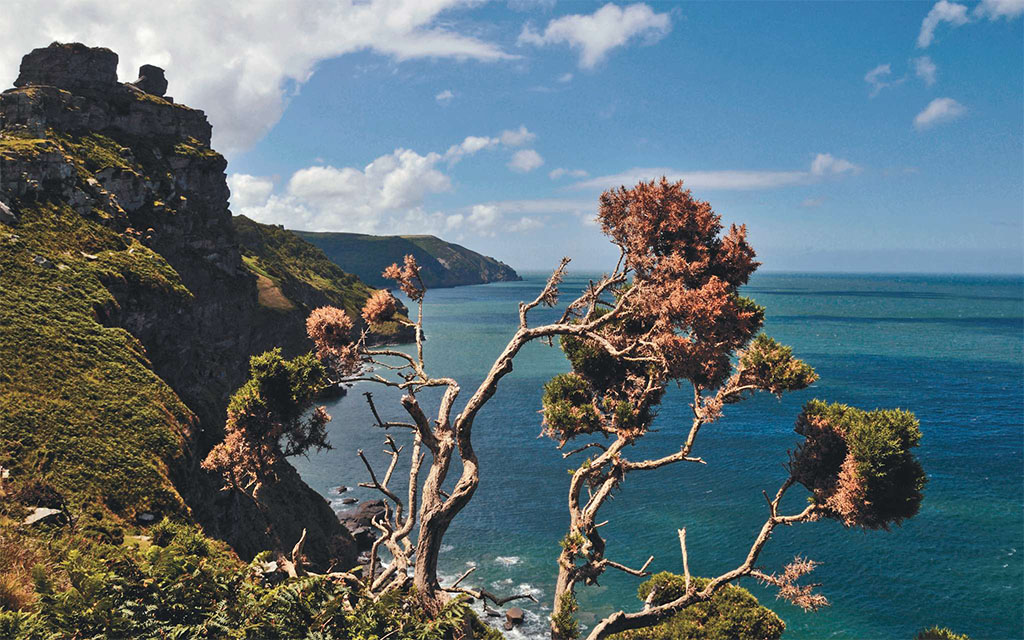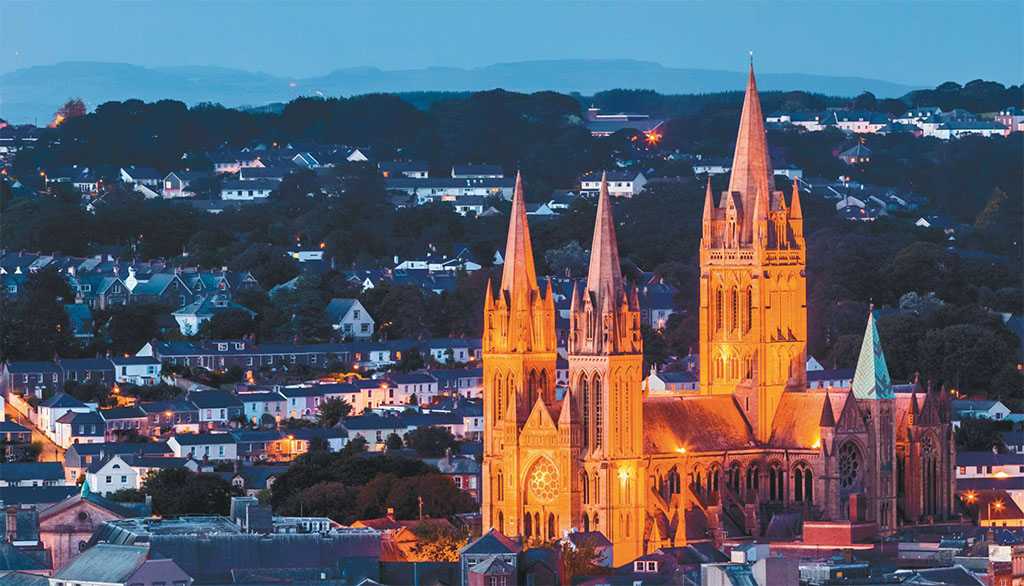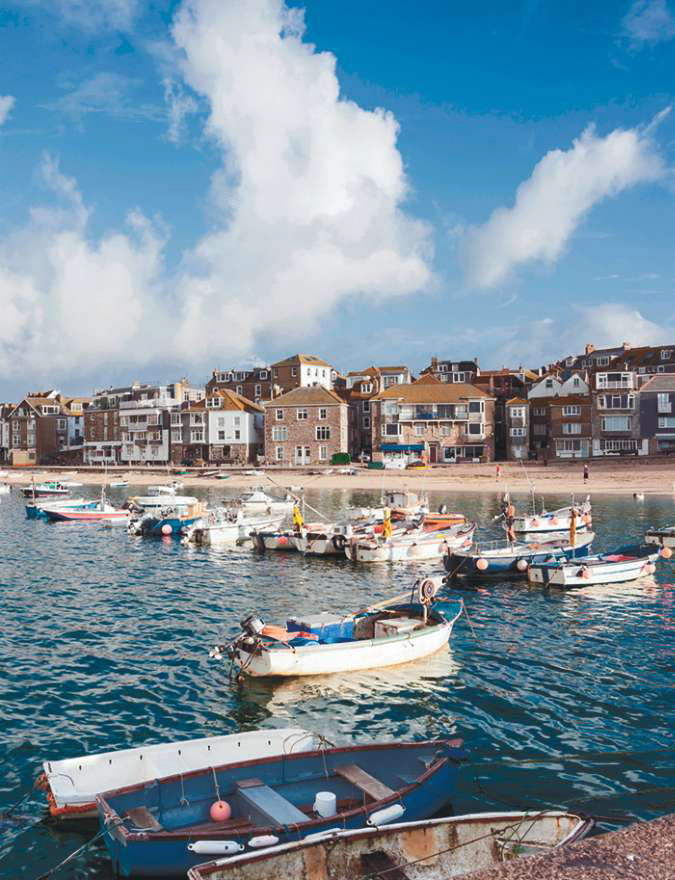
[caption id="DiscoveryontheDevonandCornwallCircular_img1" align="aligncenter" width="1024"]

Here’s an exciting Regional Discovery, full of history and art, dramatic scenery and old world hospitality. Tales of smugglers and abandoned tin mines, wind-swept heaths and great country houses, fishing villages and ancient harbors: it is a breathtaking panorama of England’s far West Country. There is a landscape and a culture all its own in the beautiful old counties of Cornwall and Devonshire.
Day 1 – Into the Western Sunset
From London and the airports, the M4 motorway leads to the West Country via the M5 south. Or take the train from London Paddington to Bristol and pick up a rental car there. Either way, take the M5 to Bridgwater, and then turn west on the A39 into the North Devon countryside. High hedgerows, grain fields and breaks of forest characterize the very English rural landscape. At Dunster you might pause to see the very medieval village and its castle before reaching the Bristol Channel coast at Minehead. It’s a climb up Porlock Hill onto the plateau of Exmoor; this is Lorna Doone Country. You can detour briefy down into the river valley at Oare to visit the tiny church where the climactic scene of Blackmoor’s famous novel takes place. Plan an overnight in the pretty twin coastal towns of Lynmouth and Lynton; take the water-powered cliff railway between the upper town and the village surrounding Lynmouth harbor.
Day 2 – On the North Cornish Coast
Today we route southwest along the coast of the Bristol Channel. You might follow the secondary coast road through Valley of the Rocks adjacent to the highest sea cliffs in England to the faded resort town of Ilfracombe; or track the A39 cross country to Barnstable. Either way, do plan a visit to the unusual and picturesque seaside village of Clovelly. The town car park is cliff top; Clovelly’s cobbled streets are much too steep and narrow for cars. The other must-see visit to plan is Tintagel Castle, perched precariously in the mists of history on the Cornish clifftop. Legend says the ancient monastery and fortress was the birthplace of King Arthur.
South of Wadebridge, you join the A30 toward Redruth and the southern tip of Cornwall. Both Penzance and St. Ives are inviting seafront towns with many lodging and dining options. St. Ives is famed as an artists’ colony, with a compact tidy town spread around a protected harbor; Penzance is a larger market town with a working waterfront. In either case, if you’re visiting in the height of summer, do have accommodations planned ahead here.
Day 3 – Puttering Around Mounts Bay
Take a morning excursion on a circumference around the Penryn Peninsula. From Penzance, breathtaking photo opportunities abound on the short drive past the fishing villages of Mousehole and Newlyn and the henge of the Merry Maidens to sadly commercialized Land’s End. Follow the coast through St. Just to St. Ives, past skeletons of engine houses left from Cornwall’s centuries of tin mining. Perhaps visit the Tate Gallery in St. Ives, Chysauster Ancient Village or the subtropical National Trust garden of Trengwainton. Explore the historic harbor town of Penzance and visit the stately home and fortress island of St. Michael’s Mount. At low tide, stroll the causeway from Marizion; at high tide, take a fishing boat from Penzance harbor. The day will not have enough hours to do it all. As always, we are only spoiled for choice.
[caption id="DiscoveryontheDevonandCornwallCircular_img2" align="aligncenter" width="1024"]

Day 4 – All Roads Lead to the River Tamar
Route northeast today on the southern side of the Cornish peninsula. Let your interests and the motoring atlas be your guide to visits along the way. You might detour to explore Falmouth and Pendennis Castle, or pause at Truro to visit Cornwall’s modest cathedral. A great morning visit is the dramatic biospheres of the Eden Project near St. Austell. This afternoon, perhaps see the magnifcent high Victorian country house, Lanhydrock near Bodmin, renowned for its depiction of upstairs/downstairs life. Our destination is Plymouth (or its environs), on the River Tamar—the border between Cornwall and Devon. There are plenteous accommodation in Plymouth of every description and pocket.
[caption id="DiscoveryontheDevonandCornwallCircular_img3" align="aligncenter" width="675"]

Day 5 – Pilgrims, Plymouth and Privateers
Though much of Plymouth is a modern city, rebuilt after the bombing of World War II, spend the morning in the old harbor; it’s the district called the Barbican, and the perch of Plymouth Hoe. Visit the Mayfower Steps, do a bit of shopping and have lunch in a seafood cafe. This afternoon, perhaps take an excursion just a few miles north on the A386 to Buckland Abbey, the 13th-century monastery turned manor house of Sir Francis Drake. There is much to explore here on the fringes of Dartmoor.
Day 6 – A Dartmoor Crossing to Exeter
Today we set out across the wild moors of Dartmoor, over some of the most desolate landscape in Britain—perfect for The Hound of the Baskervilles. From the A386, take the B3212 across the moor through Princetown to Moretonhampstead and on to Exeter. There are a variety of enticing detours along the way, to Widecombe in the Moor or Hound Tor Medieval Village. Or you might pay a visit to eccentric Castle Drogo, the strange fantasy castle built by Sir Edward Lutyens, complete with Gertrude Jekyll gardens. Plan an early afternoon arrival in Exeter, with a visit to Tourist information and majestic Exeter Cathedral. With its roots as a Roman town, Exeter has a maritime history going back 2,000 years. If you are planning a return to London by train, drop off the rental car, and if time permits, do unpack for an extra day in the old medieval city.
Day 7 – It’s All East from Here
For a return to London and its environs, a morning train from Exeter St. David’s station to London Paddington is the fastest way (or jump out at Reading for the airports). By car, it’s a half–day’s drive up the M5 and M4, or take a more scenic route following the A303 east through Wiltshire and Hampshire to the M3.





Comments